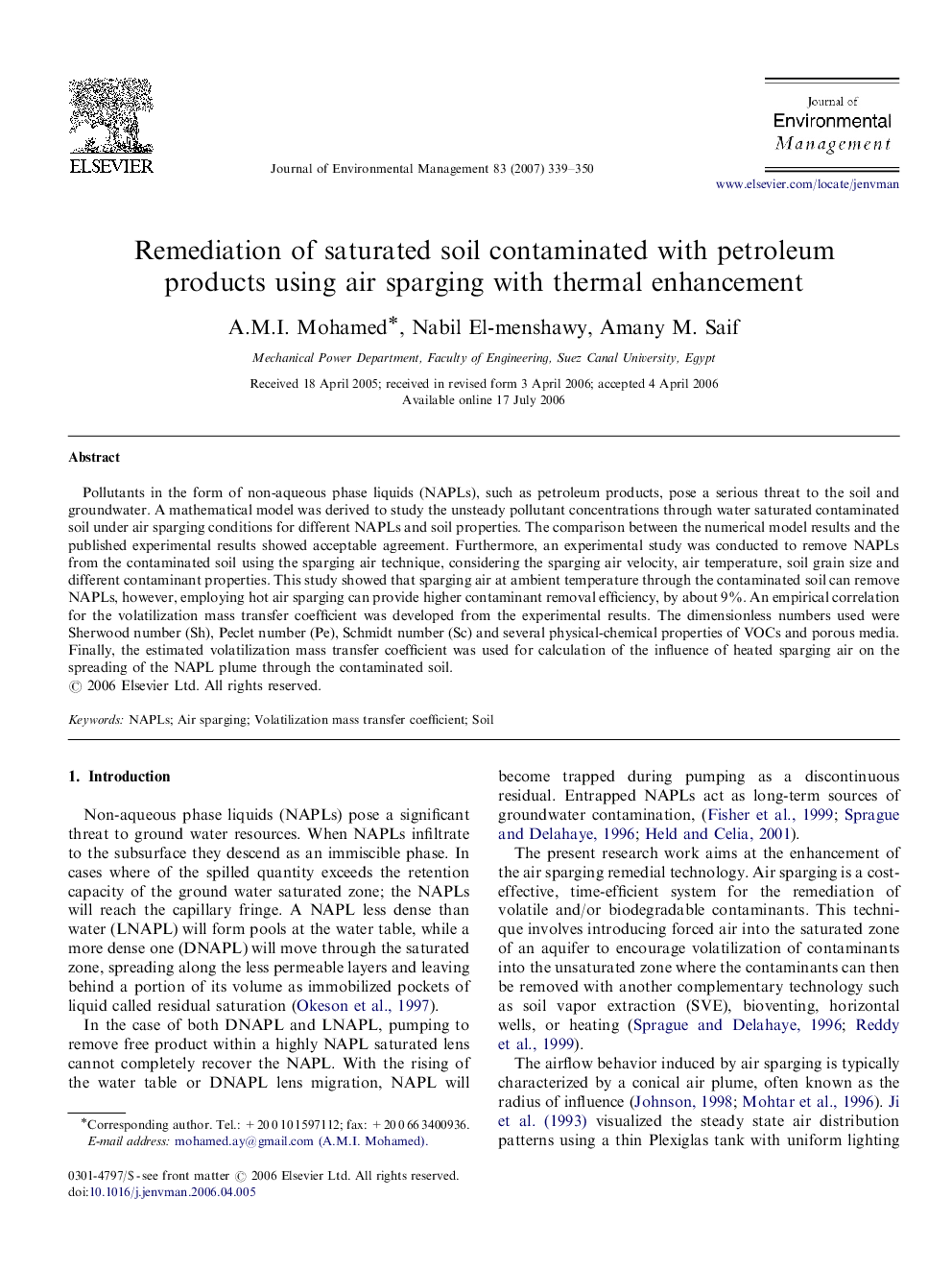| Article ID | Journal | Published Year | Pages | File Type |
|---|---|---|---|---|
| 1058870 | Journal of Environmental Management | 2007 | 12 Pages |
Pollutants in the form of non-aqueous phase liquids (NAPLs), such as petroleum products, pose a serious threat to the soil and groundwater. A mathematical model was derived to study the unsteady pollutant concentrations through water saturated contaminated soil under air sparging conditions for different NAPLs and soil properties. The comparison between the numerical model results and the published experimental results showed acceptable agreement. Furthermore, an experimental study was conducted to remove NAPLs from the contaminated soil using the sparging air technique, considering the sparging air velocity, air temperature, soil grain size and different contaminant properties. This study showed that sparging air at ambient temperature through the contaminated soil can remove NAPLs, however, employing hot air sparging can provide higher contaminant removal efficiency, by about 9%. An empirical correlation for the volatilization mass transfer coefficient was developed from the experimental results. The dimensionless numbers used were Sherwood number (Sh), Peclet number (Pe), Schmidt number (Sc) and several physical-chemical properties of VOCs and porous media. Finally, the estimated volatilization mass transfer coefficient was used for calculation of the influence of heated sparging air on the spreading of the NAPL plume through the contaminated soil.
